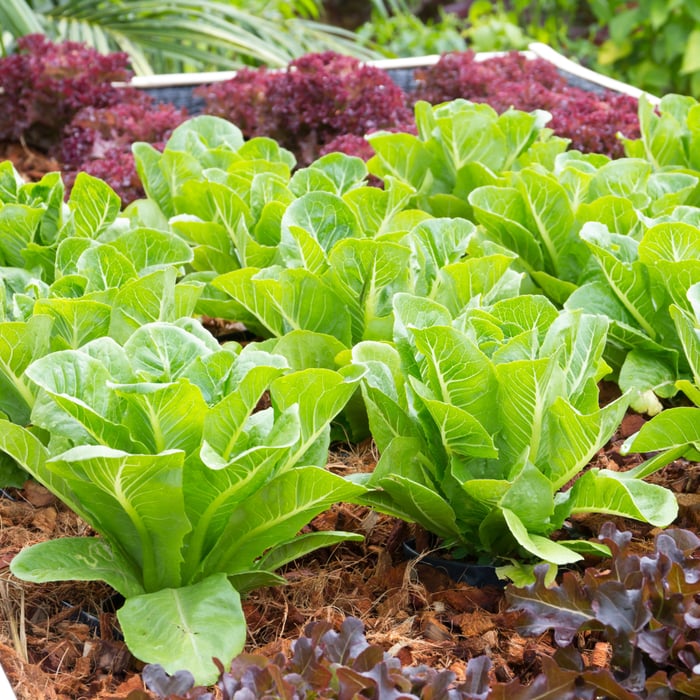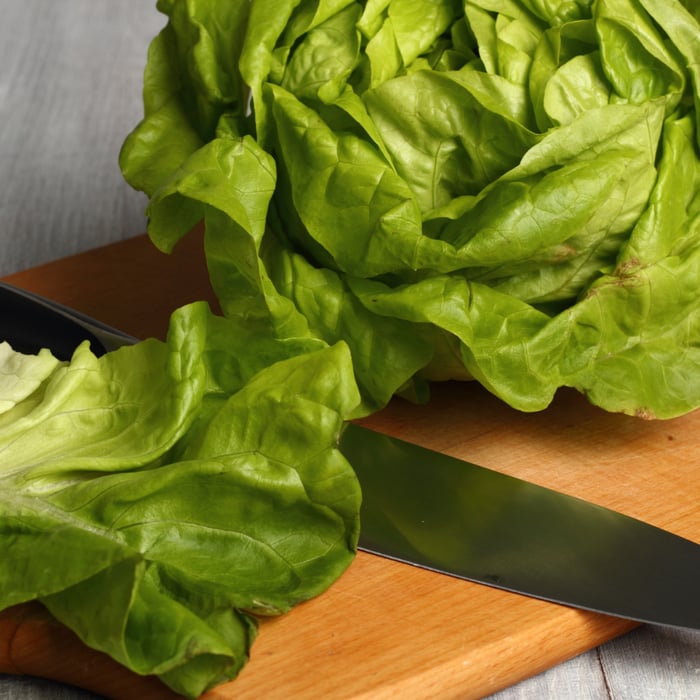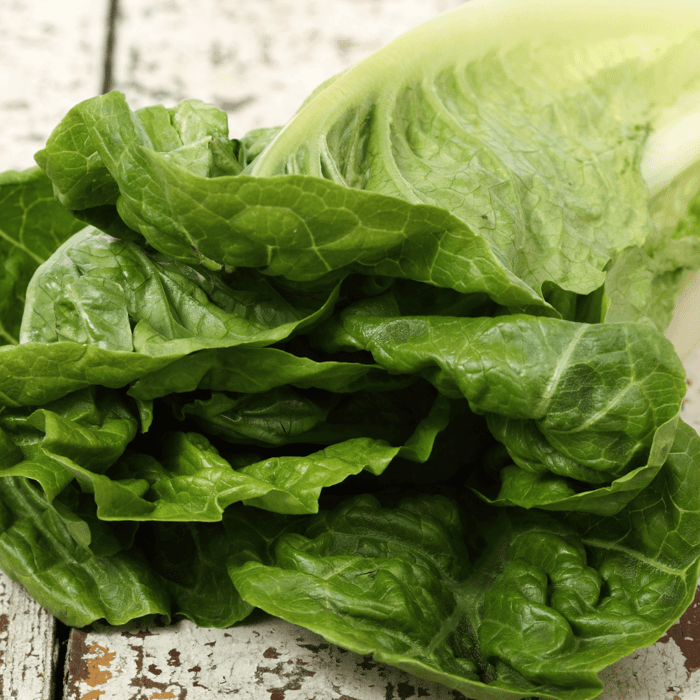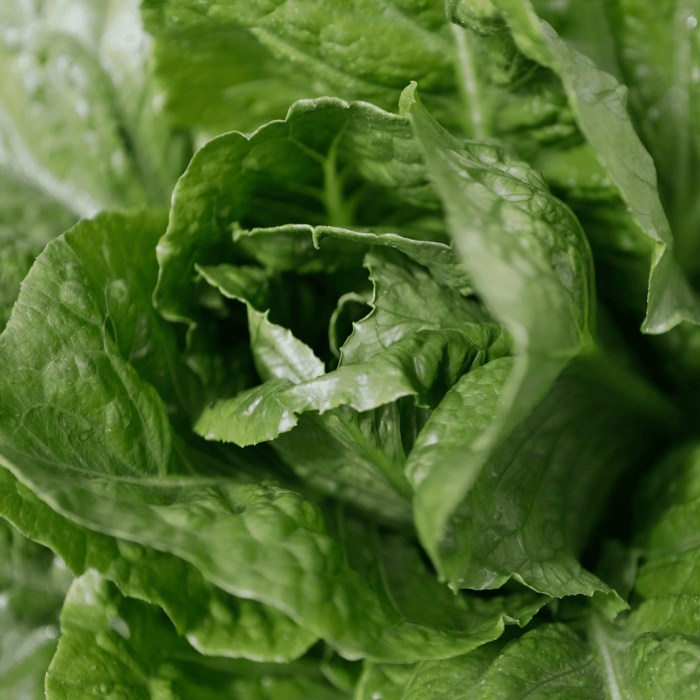In this article, I am going to cover everything from how to grow lettuce from seeds, germinate, thin, harvest, and protect your lettuce plants. With the rising cost of production in the grocery store, you might want to consider growing your own. Growing lettuce is really easy to do and very affordable.
How deep should I plant lettuce seeds?
When it comes to planting lettuce seeds, depth is an important factor to consider. Planting lettuce seeds too deep or too shallow can affect their germination and growth. So, how deep should you plant lettuce seeds?
In general, lettuce seeds should be planted about 1/4 to 1/2 inch deep in the soil. This depth is ideal because it provides enough coverage for the seed to be protected and insulated, but not so deep that it struggles to emerge from the soil. You can also follow the "rule of thumb" which is to plant the seed at a depth that is two to three times the diameter of the seed.
If you plant the seeds too shallowly, they may dry out too quickly or be eaten by birds or other animals. On the other hand, if you plant the seeds too deep, they may not have enough energy to push through the soil and reach the surface.
Lettuce Seed Assortment | 5 Variety Pack
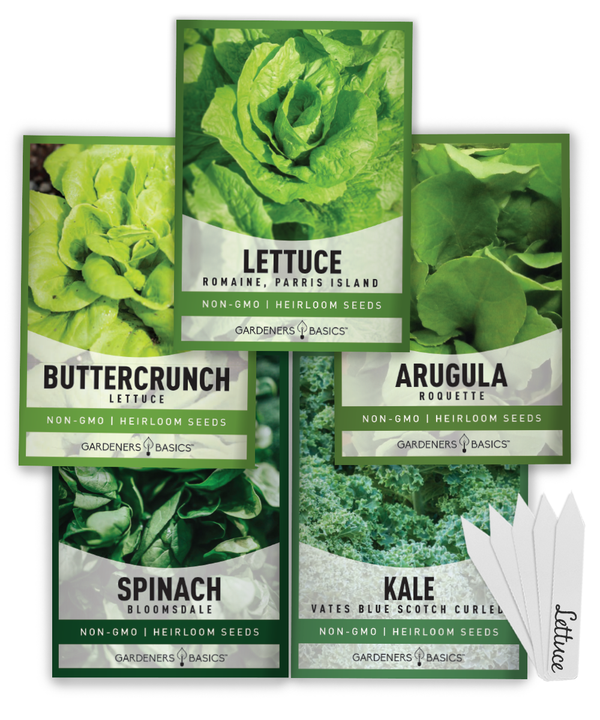
$9.95
Grow Fresh Greens Year-Round with Our 5 Lettuce Seeds Variety Pack - Heirloom, Non-GMO, Perfect for Outdoor & Indoor Gardening Introducing our 5 Lettuce Seeds Variety Pack – the perfect addition to your garden, whether you’re a seasoned grower or… read more
It's also important to consider the type of soil you are planting in. If you have heavy soil, it may be necessary to plant the seeds a little deeper to ensure they have enough contact with the moist soil. If you have sandy soil, planting the seeds a little shallower may be best to prevent them from drying out too quickly.
Another factor to consider is the weather. If you are planting lettuce seeds in hot weather, it's best to plant them a little deeper to help them stay cooler and retain moisture.
When planting lettuce seeds, it's best to plant them about 1/4 to 1/2 inch deep in the soil. However, this depth may vary depending on the type of soil and weather conditions. Remember to also follow the "rule of thumb" and plant the seed at a depth that is two to three times the diameter of the seed. With the right planting depth, your lettuce seeds should be able to germinate and grow successfully.
What is the best time to plant lettuce seeds?
Lettuce is a cool-weather crop that grows best in temperatures between 45 and 75 degrees Fahrenheit. As a result, the best time to plant lettuce seeds depends on the climate in your area.
In general, you can plant lettuce seeds in early spring, as soon as the soil is workable and temperatures are consistently above freezing. Lettuce seeds can also be planted in the fall, about 8 to 10 weeks before the first expected frost. This allows the lettuce to mature before the colder weather sets in.
If you live in a region with mild winters, you can plant lettuce seeds in the fall and enjoy a harvest all winter long. In areas with hot summers, it's best to plant lettuce seeds in the early spring or late summer when temperatures are cooler.
It's important to note that lettuce seeds can be planted indoors or outdoors. If you choose to plant them indoors, you can start them 4 to 6 weeks before the last expected frost date. This allows you to get a head start on the growing season and gives you more control over the growing environment.
When planting lettuce seeds, make sure to choose a location with partial shade, especially in areas with hot summers. Lettuce needs about 6 hours of sunlight per day, but too much direct sun can cause the leaves to wilt and become bitter.
In addition, make sure the soil is well-draining and fertile. You can amend the soil with compost or other organic matter to improve its quality. It's also important to keep the soil consistently moist but not waterlogged, as lettuce seeds need moist soil to germinate.
The best time to plant lettuce seeds depends on the climate in your area. In general, you can plant lettuce seeds in the early spring or fall, but the exact timing may vary depending on your region. Remember to choose a location with partial shade, well-draining and fertile soil, and keep the soil consistently moist. With the right timing and growing conditions, you can learn how to grow lettuce from seeds and enjoy a bountiful harvest of fresh, delicious lettuce.
How often should I water lettuce seedlings?
Watering is a critical aspect of growing lettuce from seed, as lettuce seeds need consistent moisture to germinate and grow. However, overwatering can be just as damaging as underwatering. So, how often should you water lettuce seedlings?
In general, lettuce seedlings should be watered once a day, either in the morning or evening when the temperatures are cooler. However, the exact frequency may depend on several factors, such as the type of soil, humidity levels, and temperature.
It's important to keep the soil consistently moist but not waterlogged. If the soil is too wet, the roots may suffocate and rot, leading to stunted growth or death of the plant. If the soil is too dry, the lettuce seedlings may wilt and become stressed, making them more susceptible to diseases and pests.
To determine if your lettuce seedlings need water, you can perform a simple test. Stick your finger about an inch into the soil. If it feels dry, it's time to water. If it feels moist, you can wait a day or two before watering again.
If you are growing lettuce in a container, make sure the container has drainage holes to allow excess water to escape. You can also use a watering can or hose with a gentle spray nozzle to avoid damaging the seedlings.
Another important factor to consider is the weather. If the temperatures are hot and dry, you may need to water lettuce seedlings more frequently to prevent them from drying out. On the other hand, if it's raining frequently, you may need to adjust your watering schedule to avoid overwatering the seedlings.
Lettuce seedlings should be watered once a day, either in the morning or evening when the temperatures are cooler. However, the frequency may vary depending on several factors, such as the type of soil, humidity levels, and temperature. Remember to keep the soil consistently moist but not waterlogged, and perform a simple test to determine if the seedlings need water. With the right watering schedule, your lettuce seedlings should grow healthy and strong as you learn how to grow lettuce from seeds.
Buttercrunch Lettuce Seeds
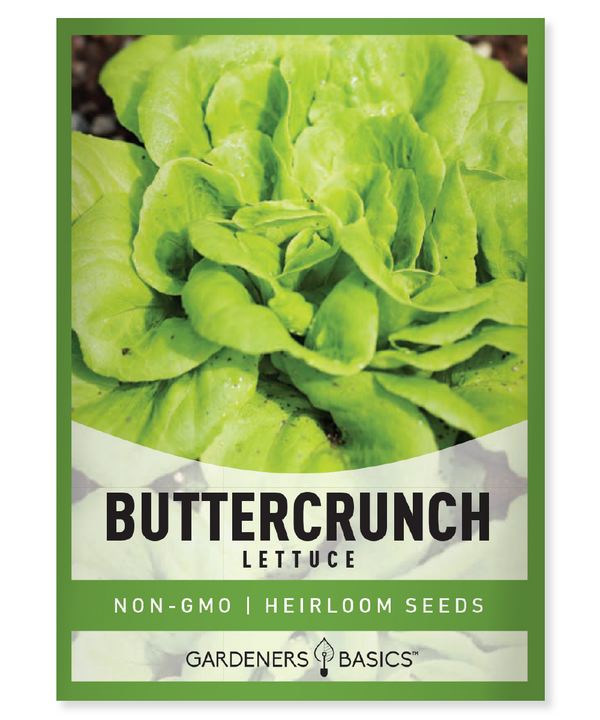
$2.49
Buttercrunch Lettuce Seeds - Heirloom, Non-GMO, Non-Hybrid, Open-Pollinated Grow the perfect salad greens with Buttercrunch Lettuce seeds, a tender and flavorful bibb lettuce variety known for its buttery texture and sweet taste. Perfect for any home garden, Buttercrunch Lettuce is a… read more
How long does it take for lettuce seeds to germinate?
Germination is the process by which a seed sprouts and begins to grow. For lettuce seeds, germination can take anywhere from 2 to 14 days, depending on several factors.
The first factor that affects lettuce seed germination is temperature. Lettuce seeds germinate best in temperatures between 60 and 70 degrees Fahrenheit. If the temperature is too low, the seeds may take longer to germinate or not germinate at all. If the temperature is too high, the seeds may not be able to absorb enough water and may die.
Another factor that affects lettuce seed germination is moisture. Lettuce seeds need consistent moisture to germinate. If the soil is too dry, the seeds may not have enough water to absorb and may not germinate. If the soil is too wet, the seeds may rot or develop fungal diseases.
The type of soil can also affect lettuce seed germination. Lettuce seeds need well-draining soil that is rich in nutrients. If the soil is too heavy, the seeds may have difficulty sprouting. If the soil is too sandy, it may not retain enough moisture for the seeds to germinate.
The depth at which lettuce seeds are planted can also affect germination. As mentioned in the first article, lettuce seeds should be planted about 1/4 to 1/2 inches deep in the soil. If the seeds are planted too deep or too shallow, it may affect their ability to germinate.
Lettuce seeds can take anywhere from 2 to 14 days to germinate, depending on several factors such as temperature, moisture, soil type, and planting depth. To ensure successful germination, make sure the soil is well-draining and rich in nutrients, and keep it consistently moist. Plant the seeds at the correct depth, and maintain a temperature between 60 and 70 degrees Fahrenheit. With the right conditions, your lettuce seeds should sprout and grow into healthy seedlings.
What is the best soil for growing lettuce from seed?
Lettuce is a cool-season crop that grows best in loose, well-draining soil that is rich in organic matter. The soil should also have a pH between 6.0 and 7.0, which is slightly acidic to neutral. So, what is the best soil for growing lettuce from seed?
The ideal soil for growing lettuce from seed is loamy soil that is rich in organic matter. Loamy soil is a combination of sand, silt, and clay particles, which creates a soil that is well-draining yet retains enough moisture for the lettuce plants to grow. Organic matter, such as compost, can be added to the soil to improve its structure and fertility.
In addition to loamy soil, lettuce also grows well in sandy loam and silt loam soils. Sandy loam is a soil that is predominantly sand but contains enough silt and clay particles to provide some structure and water retention. Silt loam is a soil that is predominantly silt but contains enough sand and clay particles to provide some drainage.
It's important to avoid heavy, compacted soils, such as clay, as they can prevent the lettuce plants from developing a strong root system and may cause the plants to rot. Additionally, excessively sandy soils may not retain enough moisture for the lettuce plants to grow.
To ensure the soil has the correct pH for growing lettuce, you can test the soil using a soil pH tester. If the pH is too low, you can add lime to raise it. If the pH is too high, you can add sulfur to lower it. However, it's important not to add too much of either, as it can affect the nutrient availability in the soil.
The best soil for growing lettuce from seed is loamy soil which is rich in organic matter and has a pH between 6.0 and 7.0. Sandy loam and silt loam soils are also suitable for growing lettuce. Avoid heavy, compacted soils, and test the soil pH to ensure it's within the ideal range. With the right soil, your lettuce plants should grow healthy and strong. Knowing your soil ph really impacts how to grow lettuce from seeds. Don't skip this step.
Should I cover lettuce seeds with soil when planting?
When planting lettuce seeds, you may be wondering whether you should cover them with soil or leave them exposed. Covering lettuce seeds with soil can protect them from drying out and provide insulation, but it can also make it harder for them to germinate. So, should you cover lettuce seeds with soil when planting?
In general, lettuce seeds should be covered with a thin layer of soil, about 1/8 to 1/4 inch deep. This depth is enough to protect the seeds from drying out and insulating them, but not too deep that they struggle to emerge from the soil.
Covering the seeds with soil can also help keep them in place and protect them from being eaten by birds or other animals. However, it's important not to cover the seeds too much, as it may affect their ability to germinate.
Alternatively, you can also use a thin layer of vermiculite or peat moss to cover the seeds instead of the soil. These materials are lightweight and can provide the same level of insulation and protection as soil, but they do not compact the soil or make it harder for the seeds to germinate.
It's also important to keep the soil consistently moist after planting to ensure the seeds have enough water to germinate. As the seedlings begin to emerge, you can gently brush away any excess soil or vermiculite to prevent them from being buried too deep.
Lettuce seeds should be covered with a thin layer of soil, about 1/8 to 1/4 inch deep when planting. This depth provides enough protection and insulation for the seeds without making it too difficult for them to germinate. Alternatively, you can use a thin layer of vermiculite or peat moss to cover the seeds. Remember to keep the soil consistently moist after planting and gently brush away any excess soil or vermiculite as the seedlings emerge.
How do I thin out lettuce seedlings?
Thinning out lettuce seedlings is an important step in growing lettuce from seed. Thinning involves removing some of the seedlings to provide enough space and nutrients for the remaining plants to grow. So, how do you thin out lettuce seedlings?
The first step in thinning out lettuce seedlings is to wait until they have developed their first true leaves. The true leaves are the second set of leaves that grow after the cotyledons, or seed leaves. Once the seedlings have developed their true leaves, you can begin the thinning process.
To thin out lettuce seedlings, start by gently pulling out the weaker or smaller seedlings by the stem. This will create more space and resources for the stronger seedlings to grow. It's important to pull the seedlings out gently to avoid disturbing the roots of the remaining seedlings.
When thinning lettuce seedlings, it's important to maintain a distance of at least 6 inches between each plant. This will ensure that each plant has enough space to grow and develop a strong root system. It will also help prevent overcrowding, which can lead to diseases and pest problems.
Black Seeded Simpson Lettuce Seeds
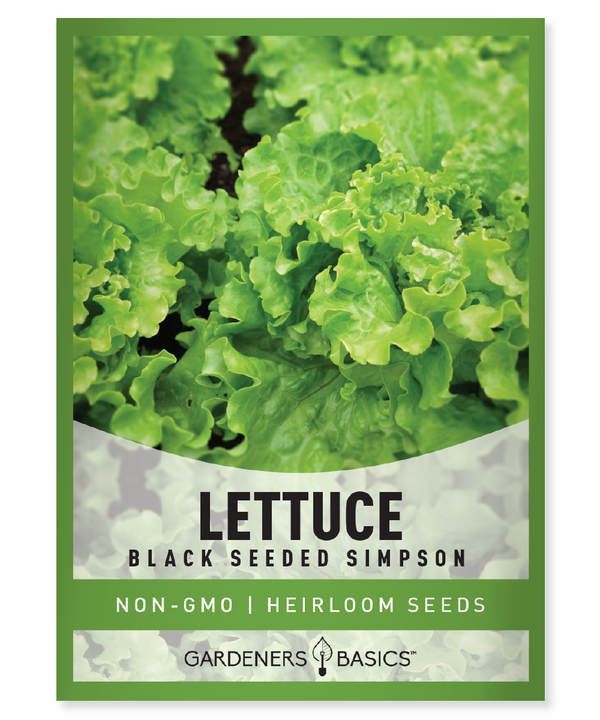
$2.49
Black Seeded Simpson Lettuce Seeds – Heirloom, Non-GMO, Non-Hybrid, Open-Pollinated Lettuce Variety for Crisp, Delicious Harvests! Discover the joy of growing Black Seeded Simpson Lettuce, a time-tested heirloom variety known for its vibrant green, tender leaves and fast-growing nature. Perfect… read more
If you are growing lettuce in rows, you can also thin the seedlings by cutting the stems of the weaker seedlings with a pair of scissors. This will avoid disturbing the roots of the remaining seedlings and create a clean cut.
After thinning out the lettuce seedlings, water the remaining plants to help them recover from the stress. It's also important to continue to monitor the seedlings and remove any additional weak or damaged plants as they grow.
Thinning out lettuce seedlings is an important step in growing lettuce from seed. Wait until the seedlings have developed their first true leaves before thinning. Gently pull out the weaker or smaller seedlings, maintaining a distance of at least 6 inches between each plant. If you are growing lettuce in rows, you can cut the stems of the weaker seedlings with scissors. Remember to water the remaining plants after thinning and continue to monitor them as they grow. With the right techniques, your lettuce plants should grow strong and healthy.
How do I fertilize lettuce seedlings?
Fertilizing lettuce seedlings is important to ensure they have enough nutrients to grow into healthy plants. However, too much fertilizer can be harmful to the seedlings. So, how do you fertilize lettuce seedlings?
The first step in fertilizing lettuce seedlings is to choose the right type of fertilizer. A balanced fertilizer, such as a 10-10-10 or 20-20-20, is a good choice for lettuce seedlings. These fertilizers contain equal parts of nitrogen, phosphorus, and potassium, which are essential nutrients for plant growth.
It's important not to use too much fertilizer, as it can cause the seedlings to become leggy or burned. Leggy seedlings are tall and spindly, with weak stems, and are more prone to diseases and pest problems. Burned seedlings have brown, dry leaves and may wilt or die.
To avoid over-fertilizing the lettuce seedlings, it's important to follow the manufacturer's instructions for the fertilizer. In general, you can fertilize lettuce seedlings once every two weeks with a diluted fertilizer solution. Dilute the fertilizer according to the instructions on the package and apply it directly to the soil around the seedlings.
Alternatively, you can use organic fertilizers, such as compost or manure, to fertilize lettuce seedlings. These fertilizers are rich in nutrients and help improve soil fertility. However, it's important to use them sparingly and follow the recommended application rates to avoid over-fertilizing the seedlings.
Another important factor to consider when fertilizing lettuce seedlings is the pH of the soil. As mentioned in the fifth article, lettuce grows best in slightly acidic to neutral soil with a pH between 6.0 and 7.0. If the soil pH is too low or too high, the plants may have difficulty absorbing the nutrients in the fertilizer. You can test the soil pH using a soil pH tester and adjust it accordingly.
Fertilizing lettuce seedlings is important to ensure they have enough nutrients to grow into healthy plants. Choose a balanced fertilizer and follow the manufacturer's instructions for application rates. Dilute the fertilizer solution and apply it directly to the soil around the seedlings. Alternatively, you can use organic fertilizers, such as compost or manure, but use them sparingly. Remember to test the soil pH and adjust it if necessary. With the right fertilization techniques, your lettuce seedlings should grow strong and healthy.
How do I prevent pests from eating my lettuce seedlings?
Pests can be a major problem when growing lettuce from seed, as they can eat the seedlings and damage the plants. There are several methods you can use to prevent pests from eating your lettuce seedlings.
The first step in preventing pests from eating your lettuce seedlings is to keep the growing area clean and free of debris. This will eliminate hiding places for pests, such as snails, slugs, and insects. It's also important to remove any dead or damaged plant material, as it can attract pests and diseases.
Another effective method for preventing pests from eating your lettuce seedlings is to use physical barriers. This includes using row covers, netting, or cages to protect the seedlings from pests. These barriers can also help regulate the temperature and humidity levels around the seedlings, creating a more favorable growing environment.
You can also use companion planting to repel pests from your lettuce seedlings. Companion plants, such as marigolds, nasturtiums, and chives, have natural pest-repellent properties and can help deter pests from your lettuce seedlings. Planting these companion plants around your lettuce seedlings can help create a natural barrier against pests.
Additionally, you can use organic pest control methods, such as neem oil, insecticidal soap, or diatomaceous earth, to control pests. These methods are safe for the environment and do not harm beneficial insects, such as bees and butterflies.
Finally, it's important to regularly inspect your lettuce seedlings for signs of pest damage. This includes looking for holes in the leaves, discoloration, or wilting. If you notice any signs of pest damage, you can take immediate action to control the pests and prevent further damage.
Preventing pests from eating your lettuce seedlings requires a combination of methods, including keeping the growing area clean and free of debris, using physical barriers, companion planting, organic pest control methods, and regular inspection. By using these methods, you can protect your lettuce seedlings from pests and grow healthy and strong plants.
How often should I water lettuce seedlings?
Watering lettuce seedlings is important to ensure they have enough moisture to grow into healthy plants. However, too much water can be harmful to the seedlings. So, how often should you water lettuce seedlings?
The frequency of watering lettuce seedlings depends on several factors, such as the type of soil, temperature, humidity, and amount of sunlight. In general, lettuce seedlings should be watered when the top inch of soil feels dry to the touch.
It's important not to overwater the lettuce seedlings, as it can cause root rot and other problems. Overwatering can also lead to the leaching of nutrients from the soil and prevent the seedlings from developing a strong root system. On the other hand, under-watering can cause the seedlings to wilt and stunt their growth.
To avoid overwatering the lettuce seedlings, it's important to use well-draining soil that allows excess water to drain away from the roots. If the soil is too heavy or compacted, it may retain too much water and prevent proper drainage.
Another important factor to consider when watering lettuce seedlings is the temperature and humidity. In hot and dry conditions, the seedlings may require more frequent watering to prevent them from drying out. In cooler and more humid conditions, they may require less frequent watering.
Parris Island Romaine Lettuce Seeds
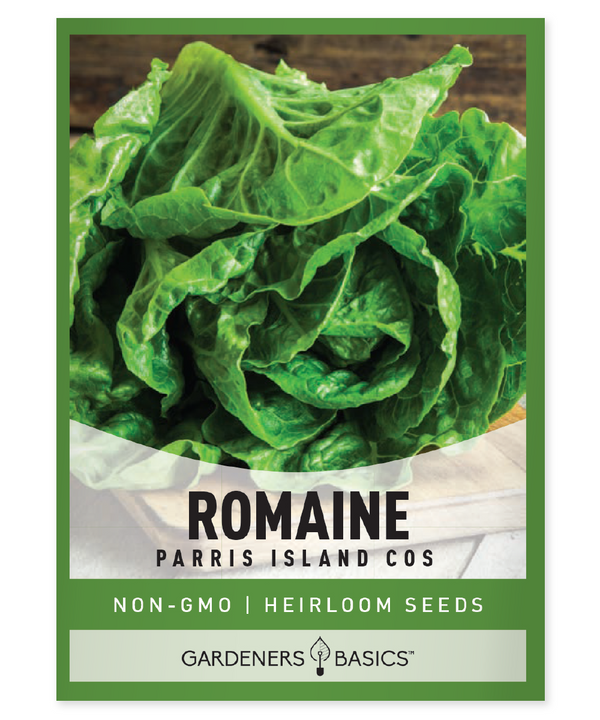
$2.49
Heirloom, Non-GMO, Open Pollinated, Non-Hybrid Parris Island Romaine Lettuce Seed Packets Our Parris Island Romaine lettuce seeds are perfect for any garden. They produce crisp, sweet romaine heads perfect for salads, wraps, and more. These heirloom, non-GMO, non-hybrid, and open-pollinated… read more
When watering lettuce seedlings, it's important to avoid wetting the leaves, as it can promote the growth of fungal diseases. Instead, water the soil directly around the seedlings, using a watering can or a gentle hose nozzle.
It's also important to water lettuce seedlings evenly and consistently. Uneven watering can lead to the development of stress cracks in the leaves and may cause the plants to bolt, or produce flowers prematurely.
Watering lettuce seedlings requires careful attention to the soil moisture, temperature, humidity, and amount of sunlight. Water the seedlings when the top inch of soil feels dry to the touch, and avoid overwatering or under-watering them. Use well-draining soil and avoid wetting the leaves when watering. Water the seedlings evenly and consistently to prevent stress and bolting. With the right watering techniques, your lettuce seedlings should grow strong and healthy.
Conclusion
In conclusion, it can seem overwhelming to have so many steps to take to grow your own lettuce at home. It really is quite easy. If you're new to gardening, growing lettuce is a great first vegetable to learn how to grow. It's easy to grow and you can grow many different varieties.
We have a lot of lettuce seeds and green seeds for sale in our store that are great for your lettuce garden. They are great both indoors and outdoors, in hydroponics and raised beds too.
Frequently Asked Questions (FAQs)
Q: How long does it take for lettuce seeds to germinate?
A: Lettuce seeds typically germinate within 7 to 14 days after planting. However, the time can vary depending on the variety of lettuce, soil temperature, and moisture.
Q: How deep should I plant lettuce seeds?
A: Lettuce seeds should be planted about 1/4 inch deep in the soil. It's important not to plant them too deep, as they may struggle to emerge from the soil.
Q: How far apart should I space lettuce seeds when planting?
A: Lettuce seeds should be spaced about 1 inch apart when planting. This will provide enough space for each seedling to grow into a mature plant.
Q: How often should I fertilize lettuce seedlings?
A: Lettuce seedlings should be fertilized once every two weeks with a balanced fertilizer, such as a 10-10-10 or 20-20-20. It's important not to over-fertilize the seedlings, as it can cause them to become leggy or burned.
Q: How do I know when to harvest lettuce?
A: Lettuce can be harvested when the leaves are large enough to eat, usually about 2 to 3 inches long. It's important not to wait too long to harvest, as the leaves can become bitter or tough.
Q: Can I grow lettuce indoors?
A: Yes, lettuce can be grown indoors under grow lights or in a sunny window. It's important to provide enough light and maintain consistent moisture and temperature levels for the plants to grow properly.
Q: What pests should I watch out for when growing lettuce?
A: Common pests that can damage lettuce plants include aphids, slugs, snails, and cutworms. Regular inspection and using pest control methods can help prevent damage from these pests.
Q: How often should I water lettuce plants?
A: Lettuce plants should be watered when the soil feels dry to the touch, usually about once or twice a week. It's important not to overwater or underwater the plants, as it can affect their growth and development.



